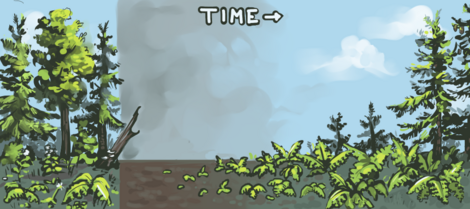
In paleontology, a fern spike is the occurrence of unusually high spore abundance of ferns in the fossil record, usually immediately (in a geological sense) after an extinction event. The spikes are believed to represent a large, temporary increase in the number of ferns relative to other terrestrial plants after the extinction or thinning of the latter. Fern spikes are strongly associated with the Cretaceous–Paleogene extinction event,[1][2] although they have been found in other points of time and space such as at the Triassic-Jurassic boundary.[3][4] Outside the fossil record, fern spikes have been observed to occur in response to local extinction events, such as the 1980 Mount St. Helens eruption.[5]
- ^ Schultz, P. H.; D'Hondt, S. (1996). "Cretaceous-Tertiary (Chicxulub) impact angle and its consequences". Geology. 24 (11): 963–967. Bibcode:1996Geo....24..963S. doi:10.1130/0091-7613(1996)024<0963:CTCIAA>2.3.CO;2.
- ^ Vajda, V.; Raine, J. I.; Hollis, C. J. (2001). "Indication of global deforestation at the Cretaceous-Tertiary boundary by New Zealand fern spike". Science. 294 (5547): 1700–1702. Bibcode:2001Sci...294.1700V. doi:10.1126/science.1064706. PMID 11721051.
- ^ Fowell, S. J.; Olsen, P. E. (1993). "Time calibration of Triassic-Jurassic microfloral turnover, eastern North-America". Tectonophysics. 222 (3–4): 361–369. Bibcode:1993Tectp.222..361F. doi:10.1016/0040-1951(93)90359-R.
- ^ Olsen, P. E.; Kent, D. V.; Sues, H. D.; et al. (2002). "Ascent of dinosaurs linked to an iridium anomaly at the Triassic-Jurassic boundary". Science. 296 (5571): 1305–1307. Bibcode:2002Sci...296.1305O. doi:10.1126/science.1065522. PMID 12016313.
- ^ Adams, Jonathan (2009). Species Richness: Patterns in the Diversity of Life. Environmental Sciences. Springer-Verlag Berlin Heidelberg. p. 125. ISBN 9783540742784.